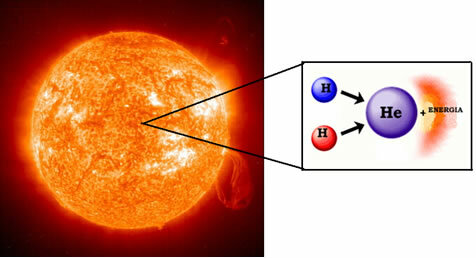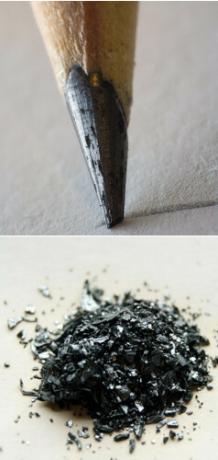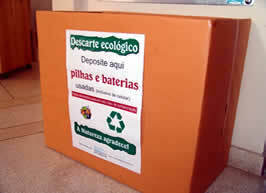Nuclear Fusion is the union of small atomic nuclei, which will form a larger and more stable nucleus.
Fusion is easier with small nuclei because, since two nuclei must collide and join, the positive charge repulsion of these nuclei will be less. Even so, it takes very high kinetic energy to overcome this repulsion and generate the collision.
Below is an example of nuclear fusion in which two nuclei fuse, one deuterium and one tritium, producing helium atoms:

This type of reaction is the source of energy for stars like the Sun. It is made up of 73% hydrogen, 26% helium and 1% other elements. This is explained by the fact that reactions occur in its nucleus, as shown above, in which hydrogen atoms fuse to form helium atoms.

Hydrogen fusion reactions are the energy source of stars, including the Sun.
The amount of energy released in this reaction is millions of times greater than the energy of an ordinary chemical reaction, and it is two million times greater than the energy released by nuclear fission. In 1952, the world could see the power of this nuclear reaction when the US dropped the first hydrogen bomb (“Mike”) on a Pacific atoll; this had a power a thousand times greater than the bombs of Hiroshima and Nagasaki. The atoll was literally vaporized.
Do not stop now... There's more after the advertising ;)
Because of this high energy released, the dream of many scientists is to produce energy through this type of reaction. However, this is not yet possible, because reactions of this type only occur at very high temperatures, as in the Sun. And it is not yet possible to work in a controlled manner with materials at thousands of degrees Celsius.
But scientists don't give up. Below we have an image and a real photo of a type of reactor, called a tokamak. These types of reactors are able to withstand high temperatures, keeping a plasma away from the walls for a short time and using magnetic confinement techniques.
These types of reactors are being tested. And the attempts do not stop, after all the merger of just 2. 10-9 % of deuterium would be enough to supply electricity to the entire world for a year.

Illustration on the left and real image on the right of type reactor tokamak, which is being tested to generate energy through nuclear fusion.
By Jennifer Fogaça
Graduated in Chemistry
Brazil School Team
Would you like to reference this text in a school or academic work? Look:
FOGAÇA, Jennifer Rocha Vargas. "Nuclear fusion"; Brazil School. Available in: https://brasilescola.uol.com.br/quimica/fusao-nuclear.htm. Accessed on June 27, 2021.



